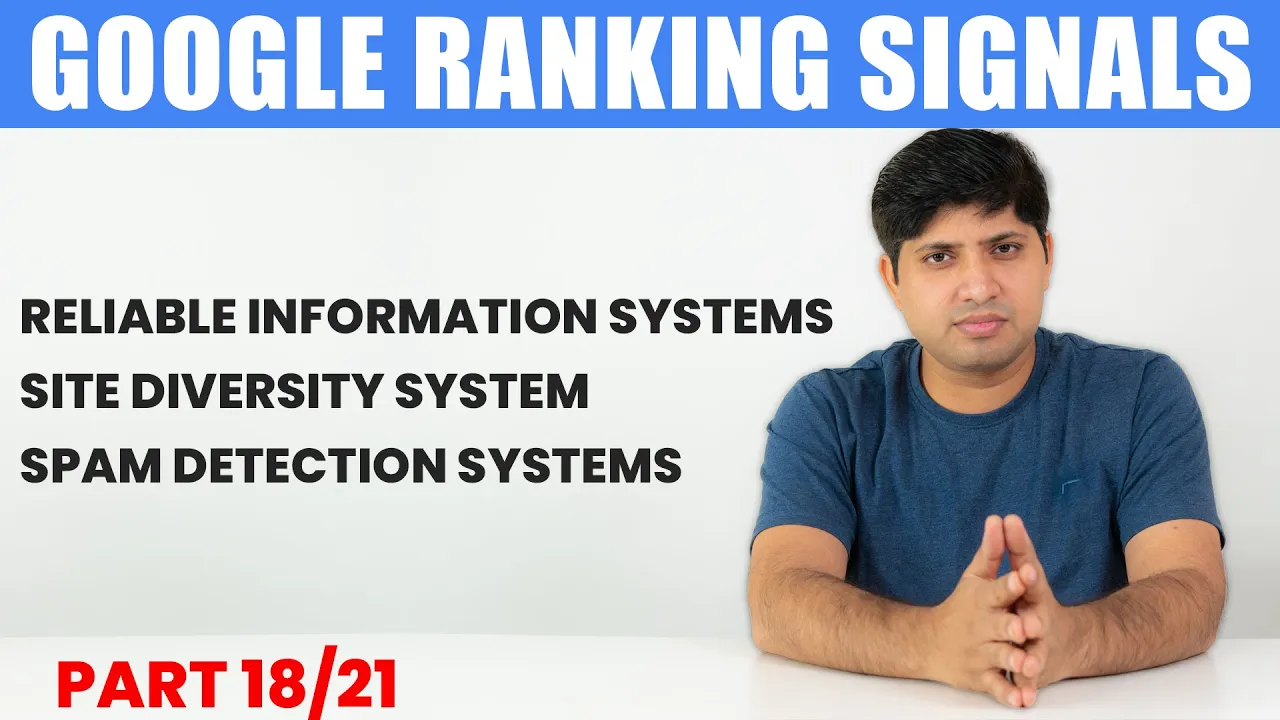Understanding Google’s ranking signals, such as Reliable Information Systems, Site Diversity Systems, and Spam Detection Systems, is crucial for website owners and digital marketers to keep their SEO strategies updated and provide accurate information to users.
🔍 Reliable Information Systems
One of the major building blocks of the Google search algorithm is considered to be Reliable Information Systems, along with others. Since Google is handling billions of queries every single day navigation has to provide reliable information on any subject of a person’s interest. Around 850 million queries are made on Google every day, covering health, news, various recipes, and other areas. Considering this great amount of information volume, the credibility of the information has to be of great concern.

Many systems ensure that the search results of a particular query are of high quality by controlling the information presented within them. Below are the main purposes of the Reliable Information Systems:
Authoritative Pages: The system identifies and presents official and reliable sources first to users.
Quite low-quality or unreliable webpages are de-emphasized in the results of their pages.
Encouraging Original Reporting: The system encourages such reporting whereby there is no re-hashing of previously published articles and this is good for journalists and users to have credible news sources.
WContent Advisory for Uncertain Topics: when Google is unable to provide reliable information regarding a topic, they may offer information with a content advisory to indicate that there may be reliable information regarding that topic.
The system combines these mechanisms to eliminate dishonest material and provide users with the highest level of information accuracy. Most importantly, website owners do not need to optimize their sites exclusively for this signal. By following other ranking signals, they will naturally optimize their content for the Reliable Information Systems signal.
🌐 Site Diversity Systems
The Site Diversity System seeks to prevent any one website from gaining an undue share of search engines from the point of view of a particular query. This system also guarantees that of presenting users to sources with circumscribed attendance. For example, when one searches for car insurance, results should not bear links oh ICICI Lombard only.

Understanding the functioning of the Site Diversity System:
A website that has already been crawled by search engines will have only one result displayed in the search, regardless of its authority.
When Google deems it beneficial to the user, it may display two or more pages from the same domain.
When handling subdomains, search engines treat them as extensions of the main (root) domain, analyzing all the pages within the domain together rather than separately.
This approach enhances user engagement by allowing users to access more information, enabling them to make well-informed decisions.
🚫 Spam Detection Systems
Spam botting has also been one of the main problems that Google has had to fight and the platform has been able to delete over four billion spam pages on a single day to help with this issue. Such a number simply demonstrates the magnitude of the problem and the need for good anti-spam measures. Ordinary Google takes good care of spamming and limits the propensity of websites to violate its policies.

The Spam Detection Systems outline some of their basic elements as follows:
Spam Brain System: This system examines web pages to detect and remove spam. It has developed in the sense that it is also able to identify spam links as well.
Policy Enforcement: Sites that do run with the spamming policies as set by Google tend to have their Google search page rank lowered or removed completely.
Spammers deploy new systems, and Google constantly revises its own to keep up.
Webmasters attempting to employ the best practices consist of for example aiming to practice avoiding any penalties. It is very important, therefore, for webmasters to understand the guidelines set by Google on spam policy.
📈 Conclusion
Any person who wants to make his or her website visible in the search engine should recognize these three ranking signals Reliable Information Systems, Site Diversity Systems, and Spam Detection Systems. For webmasters, this will lead to improvement of their rationality targeting in spamming-free websites in the housing network. Individuals will have plenty of work keeping up with the changing technology regarding search engines in the future.
The coming article will introduce some of the outdated ranking signals, thus bringing one more brick into the sponge describing the evolution of Google ranking algorithms. This knowledge will help you navigate the complexities of SEO more effectively.

